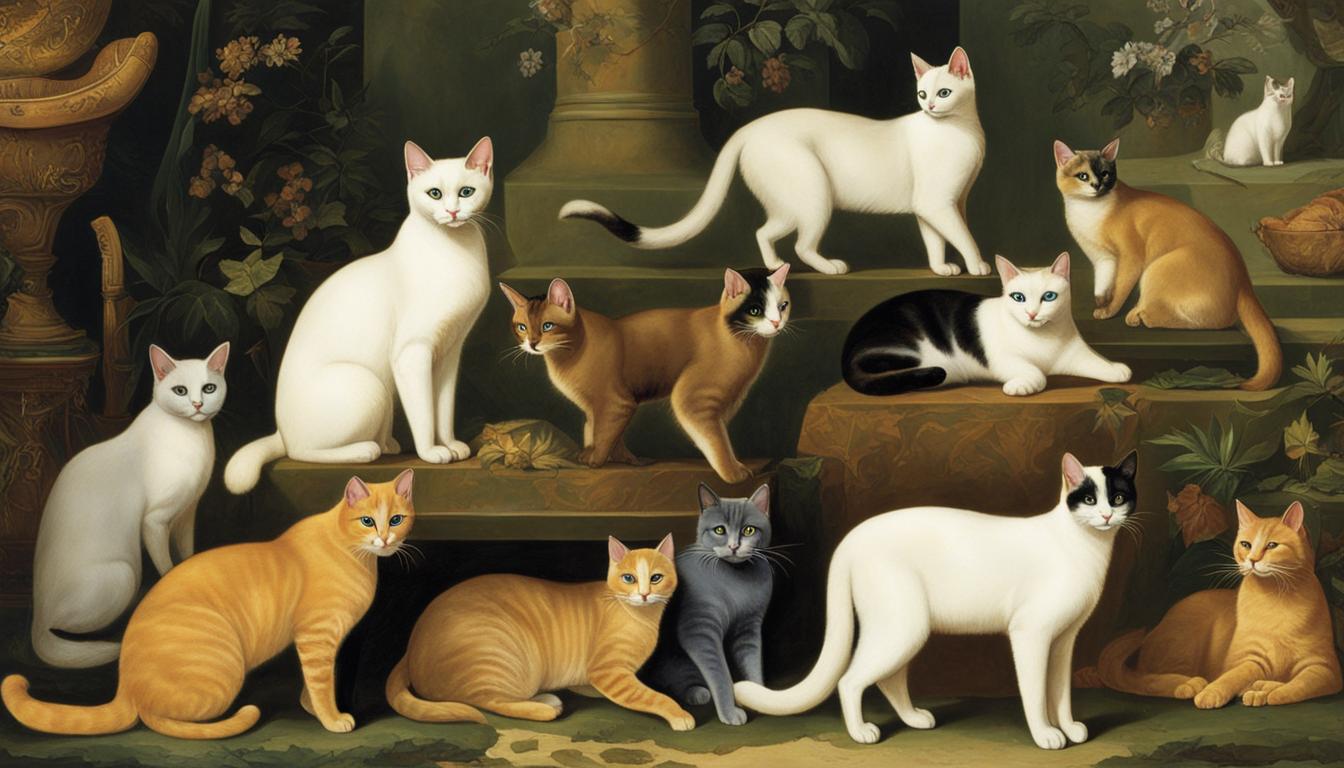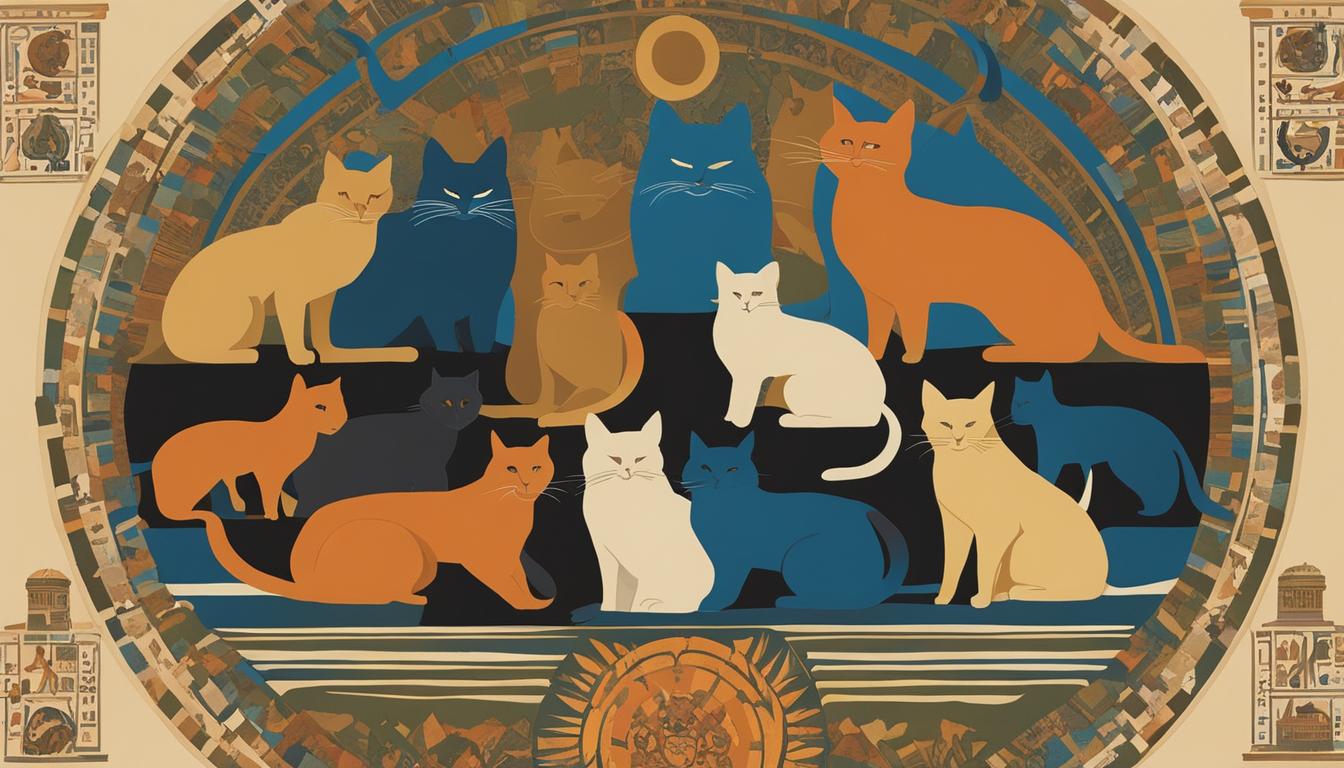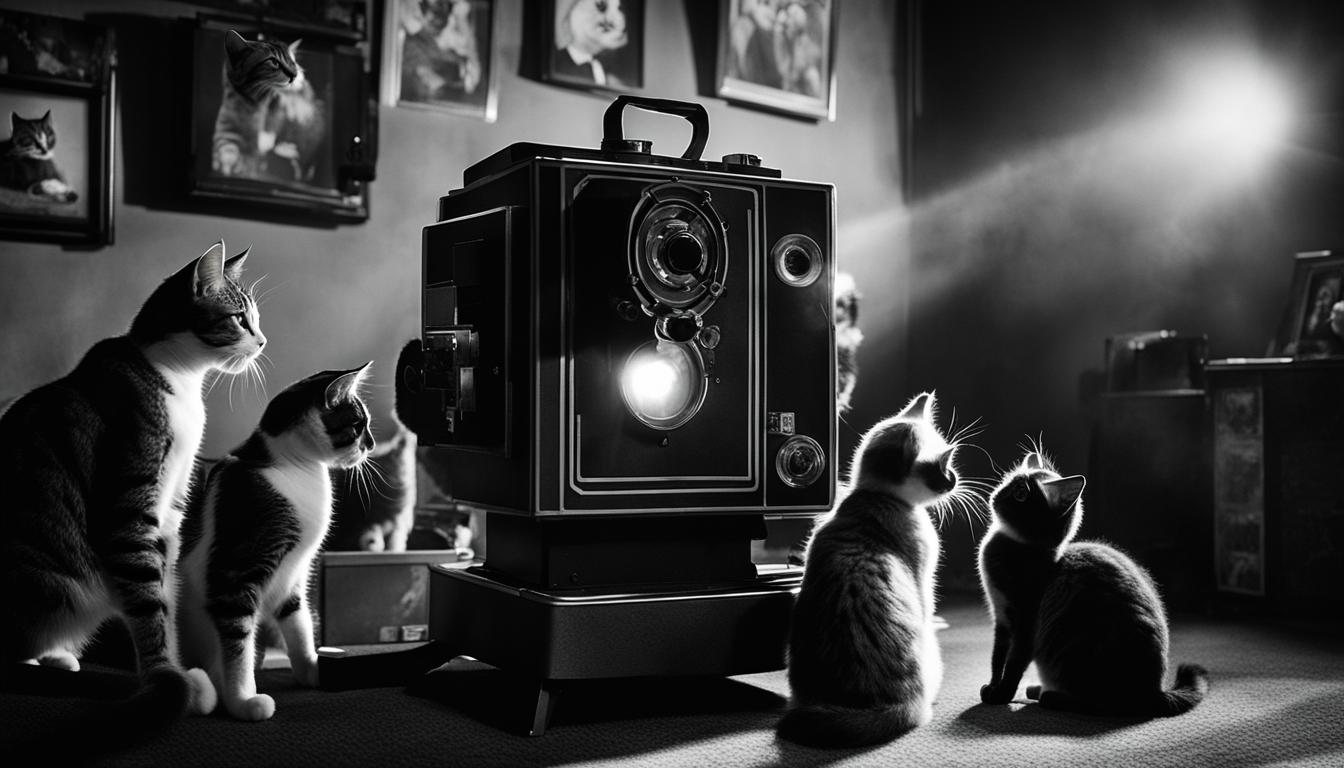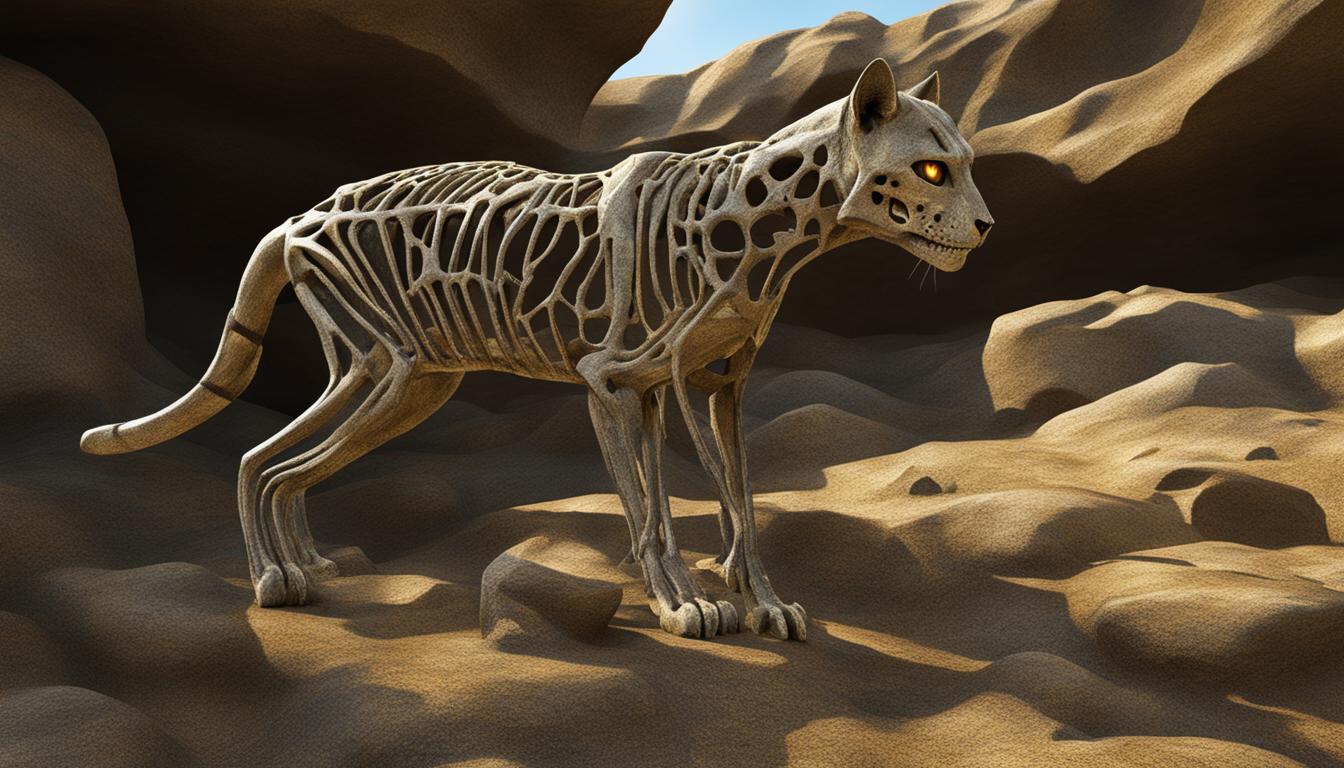Gather ’round, my feline enthusiasts! Today, we embark on a fascinating journey into the captivating world of cat domestication. From humble beginnings to global companionship, the history of cats is a meowsterious tale that begs to be unraveled.
Have you ever wondered where the bond between humans and cats first began? Well, my curious friends, it all started around 10,000 to 12,000 years ago in the Fertile Crescent. This region, where agriculture was blooming, witnessed the birth of cat domestication.
Picture this: Middle Eastern wildcats, seeking shelter and sustenance in early towns, discovered a bountiful feast of rodents attracted to stored grain. Smart little fluffballs, they were. Over time, these wildcats evolved into the domesticated felines we cherish today.
Ancient civilizations, like the Egyptians, revered and worshipped cats, elevating them to a level of divine adoration. Cats traveled far and wide, accompanying humans on their voyages and settling in various cultures, from Europe to the Americas.
Key Takeaways:
- The domestication of cats began around 10,000 to 12,000 years ago in the Fertile Crescent.
- Middle Eastern wildcats evolved into domestic cats by preying on rodents attracted to stored grain.
- Cats have traveled with humans across the globe, from ancient Egypt to Europe and the Americas.
- Ancient civilizations, like the Egyptians, worshipped and mummified cats.
- Cats have been by our side throughout history, meowing their way into our hearts and homes.
The Spread of Cat Domestication
As the domestication of cats began in the Fertile Crescent, it didn’t take long for these furry companions to spread far and wide. Through human migration and trade, cats found themselves in different cultures and countries, adapting to new environments and lifestyles along the way.
One of the earliest pieces of evidence of cats traveling with humans is found on the island of Cyprus, where humans and cats cohabited around 9,500 years ago. The ancient Egyptians, known for their reverence for cats, worshipped and even mummified these animals. Cats served as mousers on ships, accompanying sailors and helping control rodent populations. By the 4th century AD, cats had made their way to Europe, becoming a familiar sight in households.
The Global Journey of Cats
Cats didn’t stop there. They even found their way to the Americas, traveling with settlers and explorers. In fact, cats played a role in the United States Postal Service, working as mousers in post offices to keep rodents away from valuable mail. However, it wasn’t until the late 19th century that cats began to be widely accepted as house pets.
“The global journey of cats showcases their ability to adapt and thrive in various cultures, making them one of the most successful domesticated animals in history.” – Cat Lover Magazine
Cats have a unique ability to integrate themselves into human societies, making themselves at home wherever they go. Whether it’s the ancient Egyptians or modern-day cat lovers, people from different cultures have recognized the value and companionship these feline friends bring into their lives.
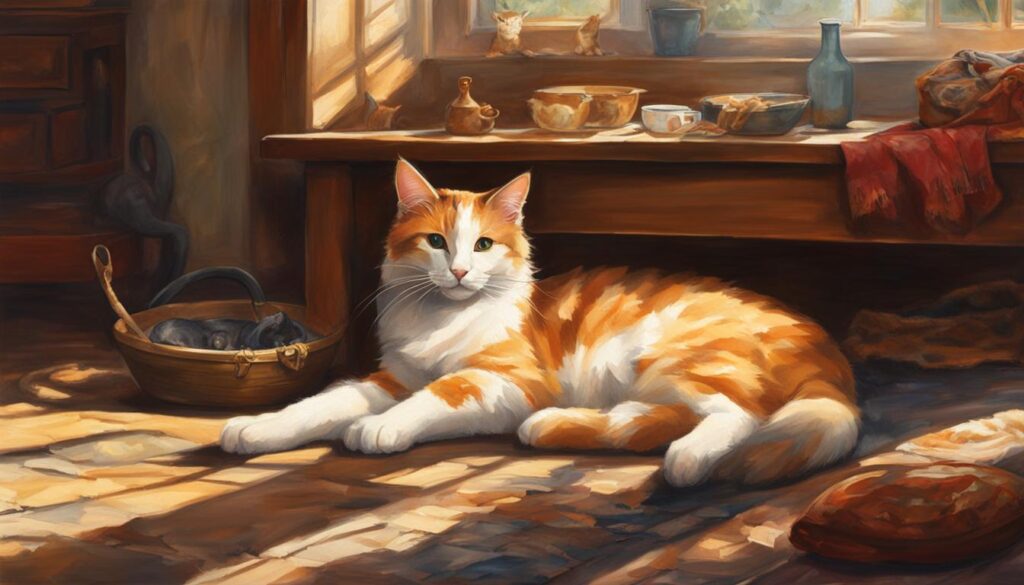
| Culture | Significance of Cats |
|---|---|
| Ancient Egypt | Worshipped and mummified cats |
| Europe | Cats accompanied settlers and became household pets |
| Americas | Cats traveled with explorers and played a role in the United States Postal Service |
With their fascinating journey across continents and their ability to adapt to different cultures, cats have truly become global companions, enriching the lives of humans in countless ways.
The Transition to Indoor Cats
The impact of cat domestication has led to the development of indoor cats, a significant shift in the way cats live and interact with humans. Over time, various factors such as refrigeration, kitty litter, and spaying/neutering have played pivotal roles in facilitating this transition.
The Impact of Cat Domestication
As cats became domesticated, their close association with humans led to a change in their natural behaviors. While their wild ancestors were primarily outdoor hunters, domestic cats gradually transitioned to a more indoor-oriented lifestyle. This shift was influenced by the availability of food and shelter provided by humans.
The Timeline of Cat Domestication
The timeline of cat domestication can be traced back thousands of years. The process began in ancient civilizations like the Fertile Crescent, where cats initially roamed freely in search of food. However, advancements in technology and human practices eventually made it possible to keep cats indoors.
| Advancements | Timeline |
|---|---|
| Refrigeration | Early 20th century |
| Kitty litter | 1947 |
| Spaying/Neutering | 1930s |
In the early 20th century, the invention of refrigeration allowed for the safe storage of cat food, eliminating the need for cats to hunt for sustenance. Additionally, the accidental discovery of clay litter in 1947 revolutionized the indoor cat experience, providing an alternative to outdoor elimination. The availability of spaying and neutering procedures in the 1930s made it easier to prevent cats from wandering outdoors during mating season, further contributing to the transition to indoor living.
Overall, the transition to indoor cats has been facilitated by advancements that have made it easier and more convenient for cats to live within the confines of human dwellings. This shift has altered their behavior and ensured their safety, ultimately strengthening the bond between cats and their human companions.
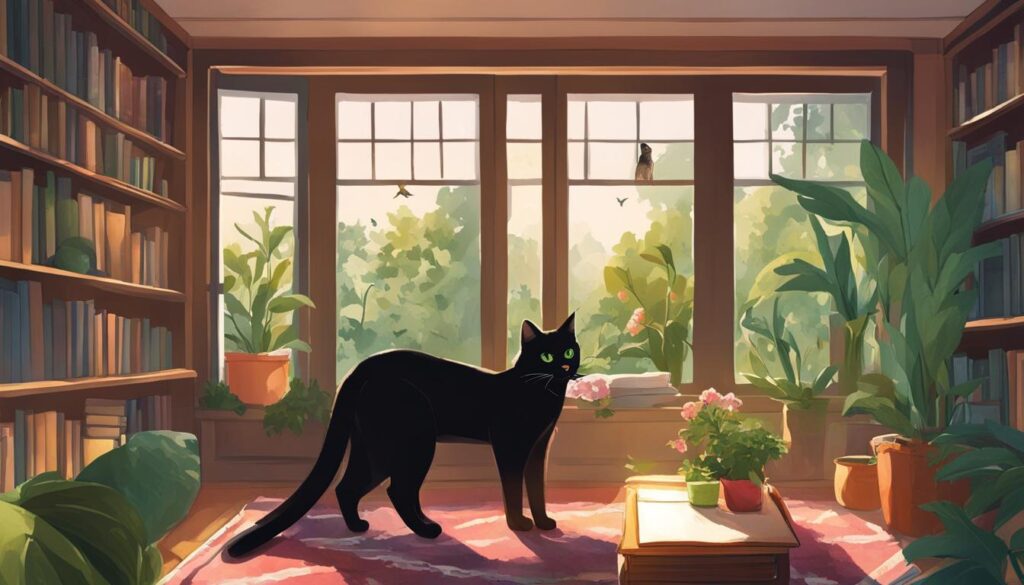
The Ancestry and Coat Patterns of Domestic Cats
When it comes to understanding the genetic origin of domestic cats, researchers have uncovered fascinating insights into their ancestry. Studies have shown that domestic cats share a common ancestor with the North African/Southwest Asian wildcat. The domestication process began in the Fertile Crescent and later accelerated in ancient Egypt. It is worth noting that while there is evidence of a potential separate domestication of leopard cats in China, it did not result in the domesticated cats we have today.
In addition to the genetic origins, cat coat patterns have also been an area of interest. The coat patterns of domestic cats vary widely, ranging from solid colors to intricate tabby patterns and beyond. These coat patterns have not only fascinated cat lovers but also provided valuable insights into the distinction between wild and domesticated cats. For example, the presence of a recessive allele that causes a blotched pattern in most tabby cats appeared in the medieval period, indicating selective breeding for specific coat colors occurred later in cat domestication.
I find it fascinating how the evolution of domestic cats is intertwined with the development of different coat patterns. The selective breeding for coat colors throughout history has shaped the diversity we see today. It’s a testament to the deep connection between humans and cats, with our fascination and appreciation for their unique beauty.
To visually demonstrate the variety of coat patterns, let’s take a look at the following table:
| Coat Pattern | Description |
|---|---|
| Solid | A coat with a single, uniform color throughout. |
| Tortoiseshell | A mix of orange and black patches, often with white areas. |
| Tabby | Distinctive patterns of stripes, spots, or swirls. |
| Calico | Tri-color pattern with patches of white, orange, and black. |
| Pointed | A coat with a lighter body color and darker extremities, such as the ears, face, paws, and tail. |
As you can see from the table, each coat pattern has its own unique characteristics, adding to the visual appeal and charm of domestic cats. It’s a testament to the intricate and fascinating world of feline genetics.
The Link Between Coat Color and Behavior
When it comes to cats, their coat color can sometimes be an indicator of their behavior. Research has shown that certain coat colors may be associated with specific traits. For example, tortoiseshell, calico, gray and white, and black and white cats may have a slightly higher chance of being more aggressive compared to other coat colors. While this doesn’t mean that all cats with these coat colors will exhibit aggressive behavior, it does suggest a potential link between coat color and temperament.
Additionally, coat color may also have an impact on shelter stays for cats. Lighter colored cats, such as white or cream-colored cats, tend to find homes more quickly compared to darker colored cats. This could be due to various factors, including people’s preferences for certain coat colors or any potential biases towards lighter colored cats. However, it’s important to note that each cat is an individual, and behavior and adoption rates can vary greatly regardless of coat color.
“The link between coat color and behavior in cats is still an area of ongoing research,” says Dr. Emily Johnson, a feline behavior specialist. “While there may be some general trends, it’s crucial to remember that each cat is unique and should be evaluated based on their individual personality and needs.”
Impact of Coat Color on Shelter Stays
Shelters play a vital role in finding homes for cats in need, and understanding how coat color can affect adoption rates is valuable information for shelter workers. By being aware of any potential biases towards certain coat colors, shelters can take steps to ensure that all cats, regardless of their coat color, have an equal chance of finding loving homes.
| Coat Color | Average Shelter Stay |
|---|---|
| Tortoiseshell/Calico | 10 days |
| Gray and White | 8 days |
| Black and White | 7 days |
| Tabby | 6 days |
| Black | 5 days |
The data above represents average shelter stays based on coat color. However, it’s important to remember that individual circumstances can vary, and factors such as age, health, and behavior also play a significant role in adoption rates. Shelters should focus on providing the best possible care and promoting all cats in their care, regardless of their coat color, to increase their chances of finding forever homes.
Understanding the potential link between coat color and behavior in cats is an ongoing field of study. While there may be some general trends, it’s important to always consider each cat as an individual with their own unique personality. By providing all cats with proper care, attention, and love, we can ensure that they thrive, regardless of their coat color.
The Evolutionary Relationship Between Cats and Humans
Throughout history, cats have maintained a unique and fascinating relationship with humans. Unlike many domesticated animals that serve a specific purpose, cats have little utility to humans in terms of sustenance or work. So why did cats choose to live among humans? The answer lies in the opportunities for food and shelter that human settlements provided.
Human settlements in the Fertile Crescent created an environment that was ripe for the thriving of wildcats. Abundant mice attracted to grain stores and the availability of trash offered an abundant food source for these proto-domestic cats. Over time, natural selection favored cats that could cohabitate with humans, leading to their proliferation.
Today, most domesticated cats are still capable of surviving independently of humans. They retain their hunting instincts and have the ability to find food and shelter if necessary. However, the bond between cats and humans has grown beyond mere survival. Cats have become beloved pets in millions of households worldwide, providing companionship, comfort, and entertainment.

The relationship between cats and humans is a testament to the power of companionship and the ability of different species to coexist. Despite their independent nature, domestic cats have found a place in our hearts and homes, enriching our lives with their unique personalities and playful antics.
Conclusion
Cats have always had a way of capturing our hearts and intriguing us with their mysterious ways. Throughout history, their domestication journey has been a fascinating one.
Originating in the Fertile Crescent thousands of years ago, cats quickly spread their paws across the globe, traveling alongside humans and adapting to new environments. From ancient Egypt to Europe and the Americas, cats have made their mark in every corner of the world.
The transition from outdoor to indoor cats marked a significant turning point in cat domestication. Innovations like refrigeration, cat litter, and spaying/neutering made it possible for cats to find a cozy home indoors, away from the dangers and uncertainties of the wild.
Looking back at the history of cat domestication, we can trace their genetic origins to the North African/Southwest Asian wildcat. Over time, humans selectively bred cats for their coat colors, giving rise to the beautiful and diverse feline companions we know and love today.
Cats have always had a unique relationship with humans. Unlike other domesticated animals, cats chose to live among us, finding food and shelter in human settlements. This innate ability to coexist has earned them a special place in our hearts and homes.
As we reflect on the history of cat domestication, it’s clear that cats have come a long way. From wild hunters to beloved pets, they have left an indelible paw print on our lives. So, the next time you curl up with your feline friend, remember the incredible journey that brought them into your home.
FAQ
How long have cats been domesticated?
Cats have been domesticated for over 10,000 years.
Where did the domestication of cats begin?
The domestication of cats began in the Fertile Crescent, where agriculture was developing.
How did cats spread worldwide?
Cats spread worldwide through human migration and trade.
When did cats reach Europe?
Cats reached Europe around the 4th century AD.
When did cats become house pets?
The acceptance of cats as house pets increased in the late 19th century.
What innovations facilitated the transition to indoor cats?
Refrigeration, kitty litter, and spaying/neutering made it possible to keep cats indoors.
What is the genetic origin of domestic cats?
Domestic cats have a common ancestor in the North African/Southwest Asian wildcat.
What is the link between coat color and behavior in cats?
Tortoiseshell, calico, gray and white, and black and white cats may have a slightly higher chance of being more aggressive.
How do cats choose to live with humans?
Cats likely chose to live among humans due to opportunities for food and shelter.

